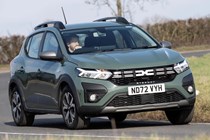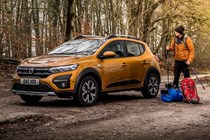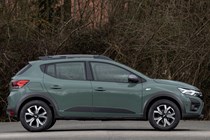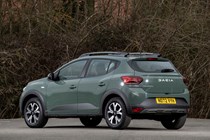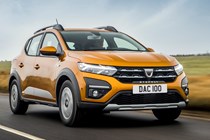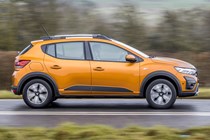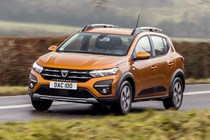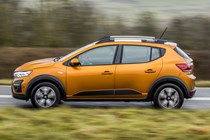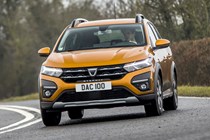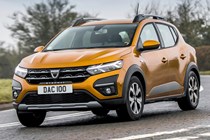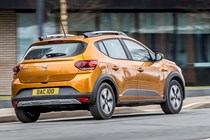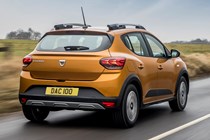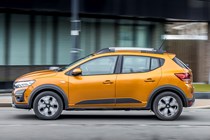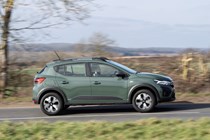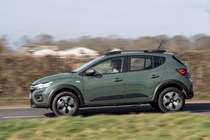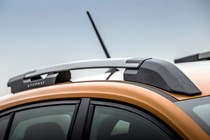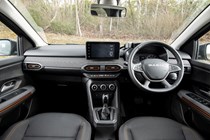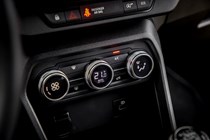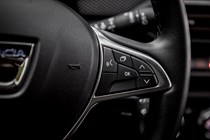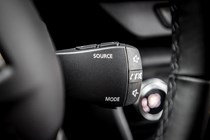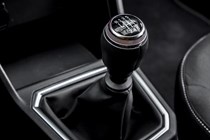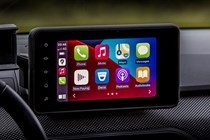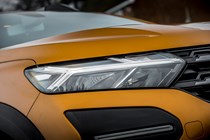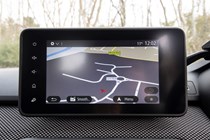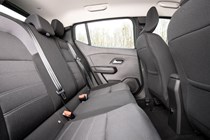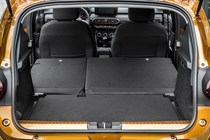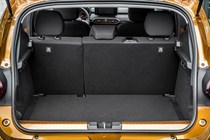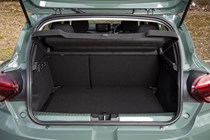Dacia Sandero Stepway engines, drive and performance

- One engine, two power outputs to choose from
- Petrol or petrol with LPG – no diesels, no hybrids
- Automatic only available on mid- and top-range cars
Sandero Stepway engines come in three flavours – the 90hp petrol model, the 90hp petrol with automatic transmission, and the 100hp with LPG fuelling. They’re all effectively the same 1.0-litre three-cylinder engine with two different power outputs.
The LPG Bi-fuel TCe 100 model offers the longest overall driving range of any comparable car, with 800 miles available when driven gently and with both fuel tanks full and used in parallel. In that respect alone, it’s unique in this class.
We’ve sampled the TCe 100 Bi-fuel and have driven it extensively in both LPG and petrol models, with little performance difference noticeable. The buzzy little engine delivers its power eagerly, and you need to be active with the gears if you want to keep it spinning along at a decent pace. It’s easy to switch between fuels with the digital display showing the range on the fuel you’ve selected.
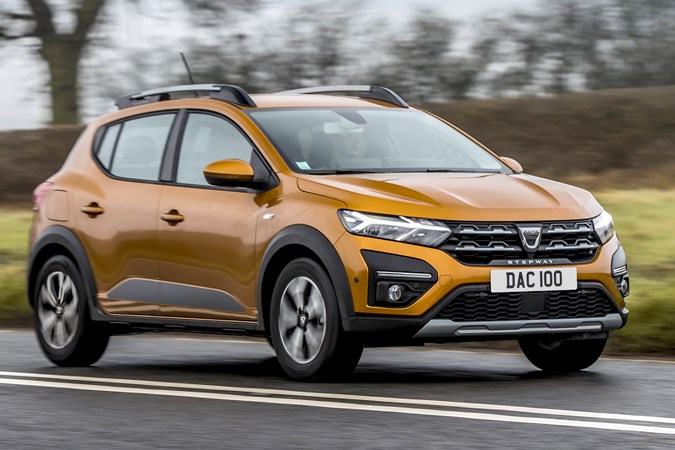
This 100hp turbocharged petrol is quite good fun to drive, and never sounds or feels too harsh, no matter how hard you drive it. But if you relax and take it easy, it recedes into a background hum and cruises very nicely indeed. It’s in this environment that the Stepway comes into its own as its respectable mid-range pull and comfortable suspension set-up combine to make it a very relaxing car to drive gently.
It’s not perfect though, as at higher speeds, you need to work it hard, especially if it’s loaded. Our reviewer, Richard Kilpatrick commented in his extended time with the car: ‘Hit the motorway, and the surprise is how accomplished the Sandero is at handling British long-distance tedium as well as it does towns and country roads. It’s quiet generally, and the revs are kept down in sixth gear – there’s enough power in reserve for overtaking if you change down, at least when it’s just the driver on board.’
What’s it like to drive?
- Plenty of grip, lots of bodyroll
- Built for comfort, not speed
- Nice gearchange, slow steering
The best way of describing the Sandero Stepway is that it’s at its happiest on straight roads and away from bends. It’s not that it isn’t good at cornering, but for your passengers’ equilibrium, you’ll probably prefer to take things more slowly. Richard put it succintly: ‘it’s proven extremely capable being great in town, bounding over speedbumps and stress-free on rough roads particularly as it has cheaper plastic wheeltrims to think about.’
The main issue is that the Stepway likes to roll in corners. And for those who enjoy the sparkle of a small car, this is a bit disappointing. Don’t get us wrong – there’s plenty of grip, it’s good to have a car that rides rough roads smoothly and this comfort bias suits the car perfectly well.
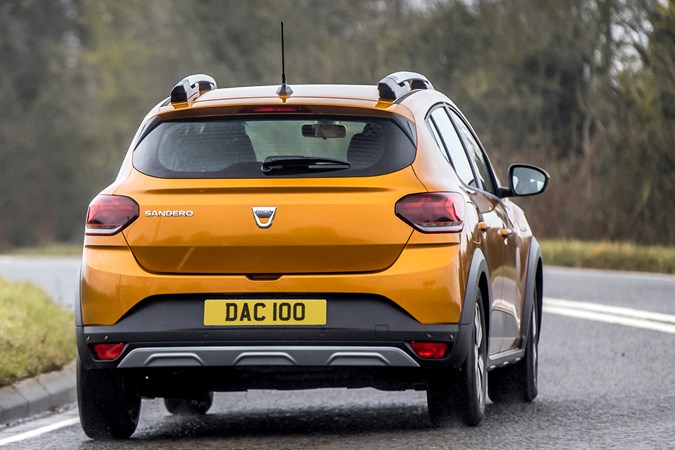
The main reason for this is the Stepway’s raised ride height, which makes it feel a bit podgy and unwieldy. Although it’s styled as an SUV, it’s a front-wheel drive car, with no traction-enhancing electronic aids. So, don’t expect it to off-road, but do enjoy its ability to shrug off rutted tracks with ease.
The Sandero Stepway has been conceived to deal well with rough and unmade roads as well as the worst potholes that typical cities have to offer. And on that, it succeeds – these conditions are shrugged off with real ease.
There’s a downside, as Parkers Deputy Editor Luke Wilkinson recalled after several long trips in the car: ‘Its suspension is quite floaty which produces a sensation akin to sea sickness for me. Just like a boat on a rough sea, the view of the horizon out of the Sandero’s windscreen looks level, but you can feel your connection to the earth rocking underneath your backside.’
On the motorway, it starts to struggle more than we’d expect, with an unsettled, floaty ride and rather too much wind noise from the front screen and door mirrors leaving the driver tired after a day behind the wheel.


